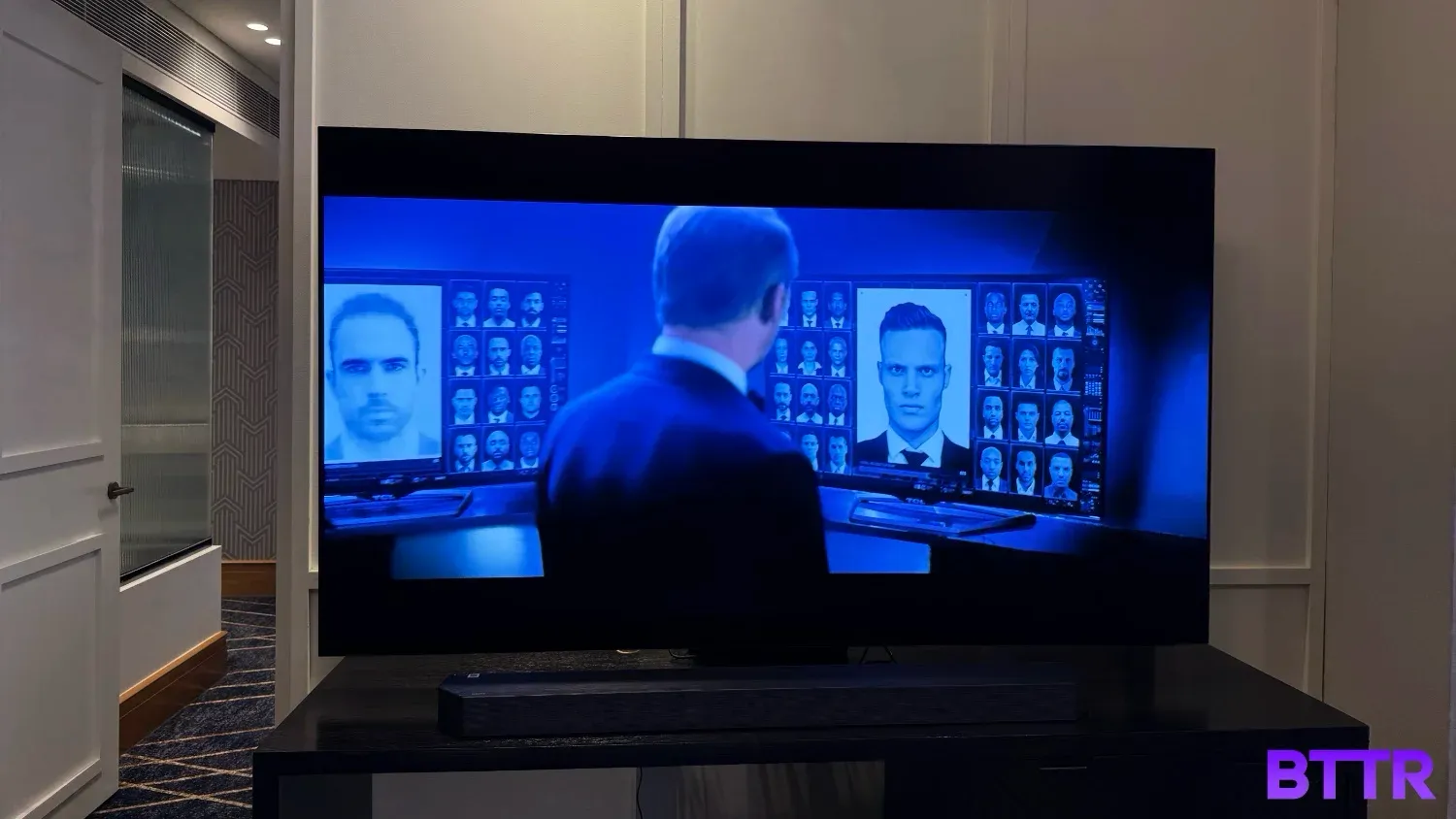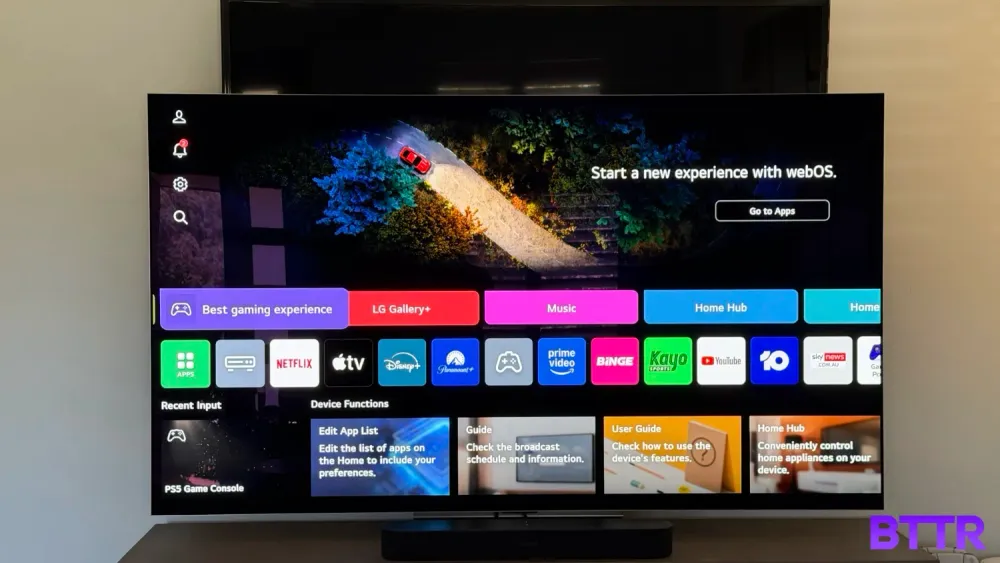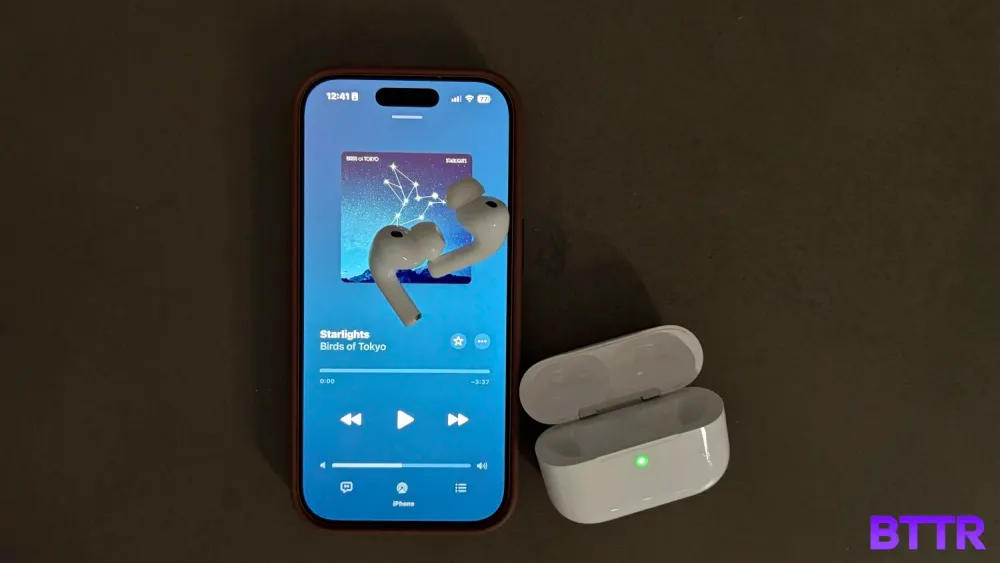Pros
- Anti-reflective coating works great
- Huge screen looks fantastic
- AI upscaling can be customised
Cons
- The price tag. Oof!
- AI upscaling doesn't help low-quality sources
- TV speakers aren't fantastic (use a soundbar!)
🛒 Where to buy Samsung TVs and appliances
Available from these trusted retailers:










BTTR is independent, but we may earn money when you purchase through links on our site. This helps us cover costs and continue providing honest reviews. Find out why you should trust us.
If I try watching TV during the day, even with the blinds and door closed, I can see a very clear reflection of my front door and window on the screen. The arrangement of my lounge room means you get the reflection from pretty much anywhere you sit, too.
Samsung's new S95F series of OLED TVs could solve this problem for me. With an upgraded version of the anti-reflective surface introduces in last year's S95D models, Samsung's latest TVs are easily viewing in even the worst-lit room.
But that viewability comes at a real cost. The challenge is weighing up just how much you are prepared to pay to be able to see your TV in any type of lighting.
I spent about 4.5 hours playing around with the new 83 and 77-inch models in a hotel room in Sydney this week, and the TLDR here is that Samsung makes good TVs.
That really isn't new information – Samsung has been the number one TV brand in the world for 19 years, apparently. You don't get to that position without making good products.
But OLED is a relatively new playground for the Korean company. It's first OLED TV in Australia launched back in 2022, about 10 years after LG started shipping OLED panels.
Last year with the S95D, Samsung added an anti-reflective coating to its flagship OLED TVs. I didn't get to really test that TV extensively, but the brief experience I had with it at the launch showed it worked reasonably well.
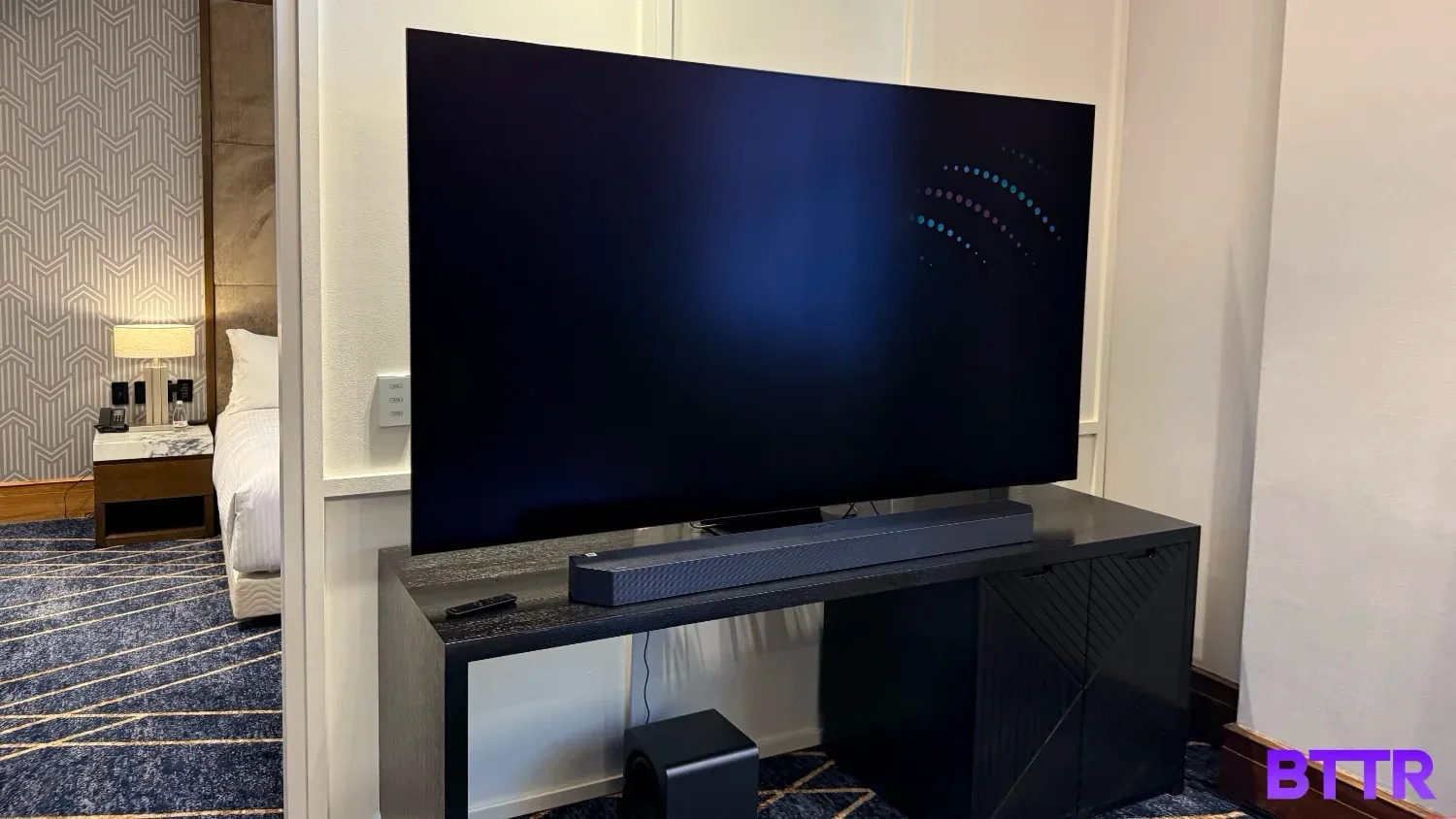
This year, Samsung improved the coating and set up the 83-inch S95F in a room with a truly awful lighting setup. With open blinds, downlights, and lamps all around the room, with any other TV I think I would have struggled to see what was being shown.
In fact, even last year's QN900D Neo QLED 8K Smart TV struggled. Just look at this picture from that review:
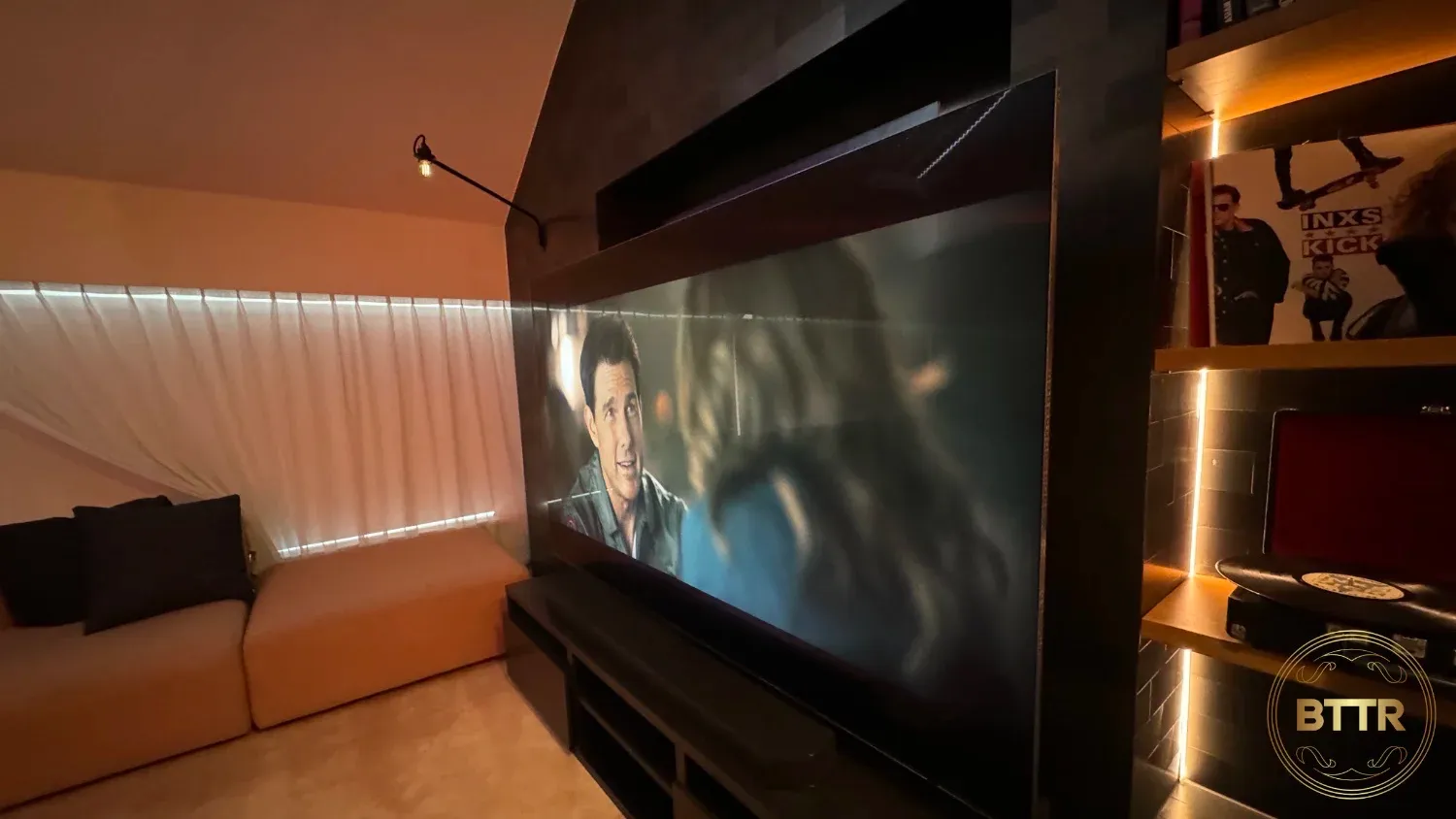
Now let's take a look at how the S95F OLED performed this week:
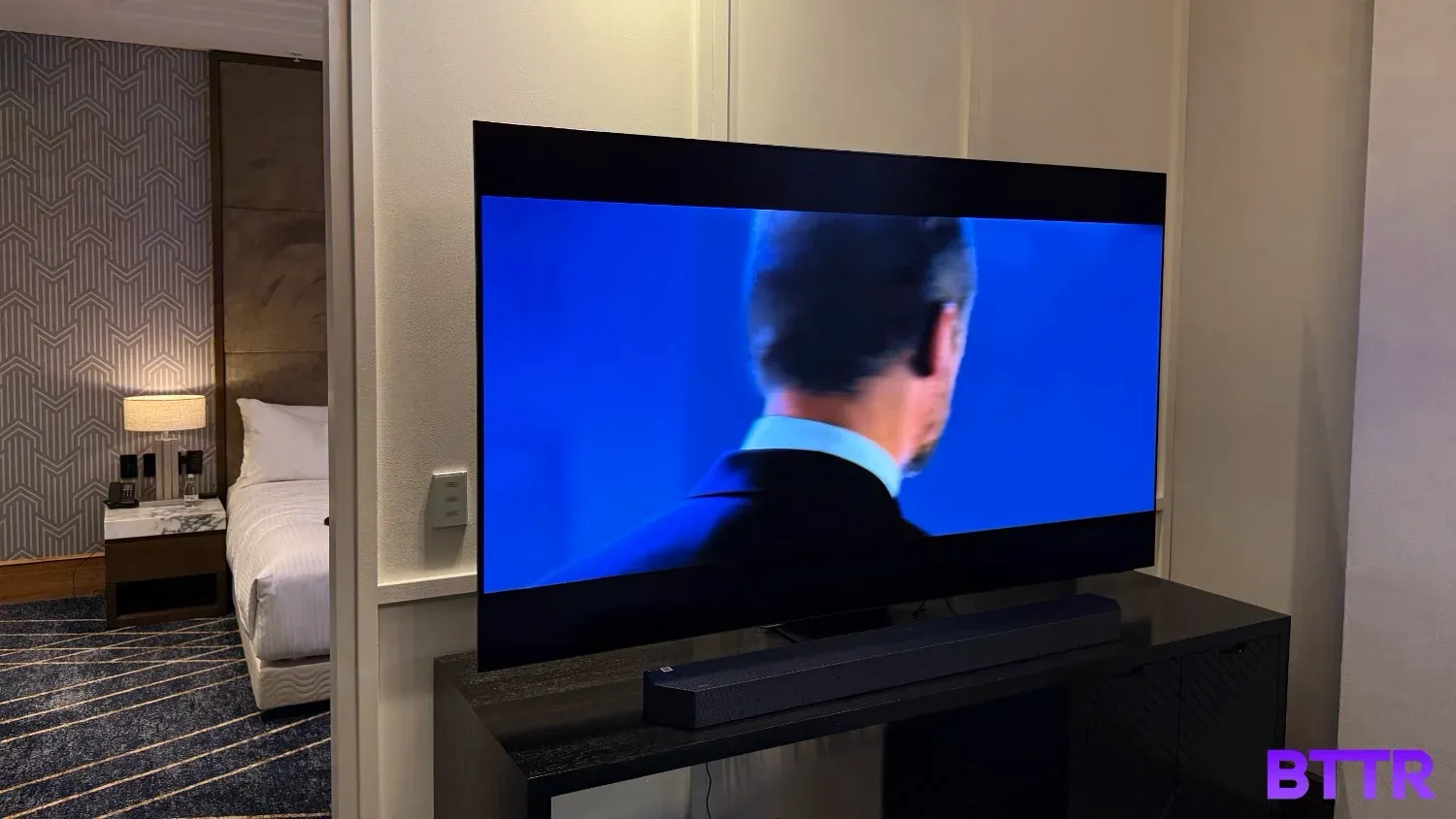
Now obviously, these are different rooms and different photos at different times. But the OLED does a fantastic job of dealing with glare.
It doesn't completely stop it from happening. If you have a black screen, you can still see a muted glow of reflection. But it doesn't interrupt the viewing experience, which is a huge benefit when watching during the day.
Personalised AI-upscaling
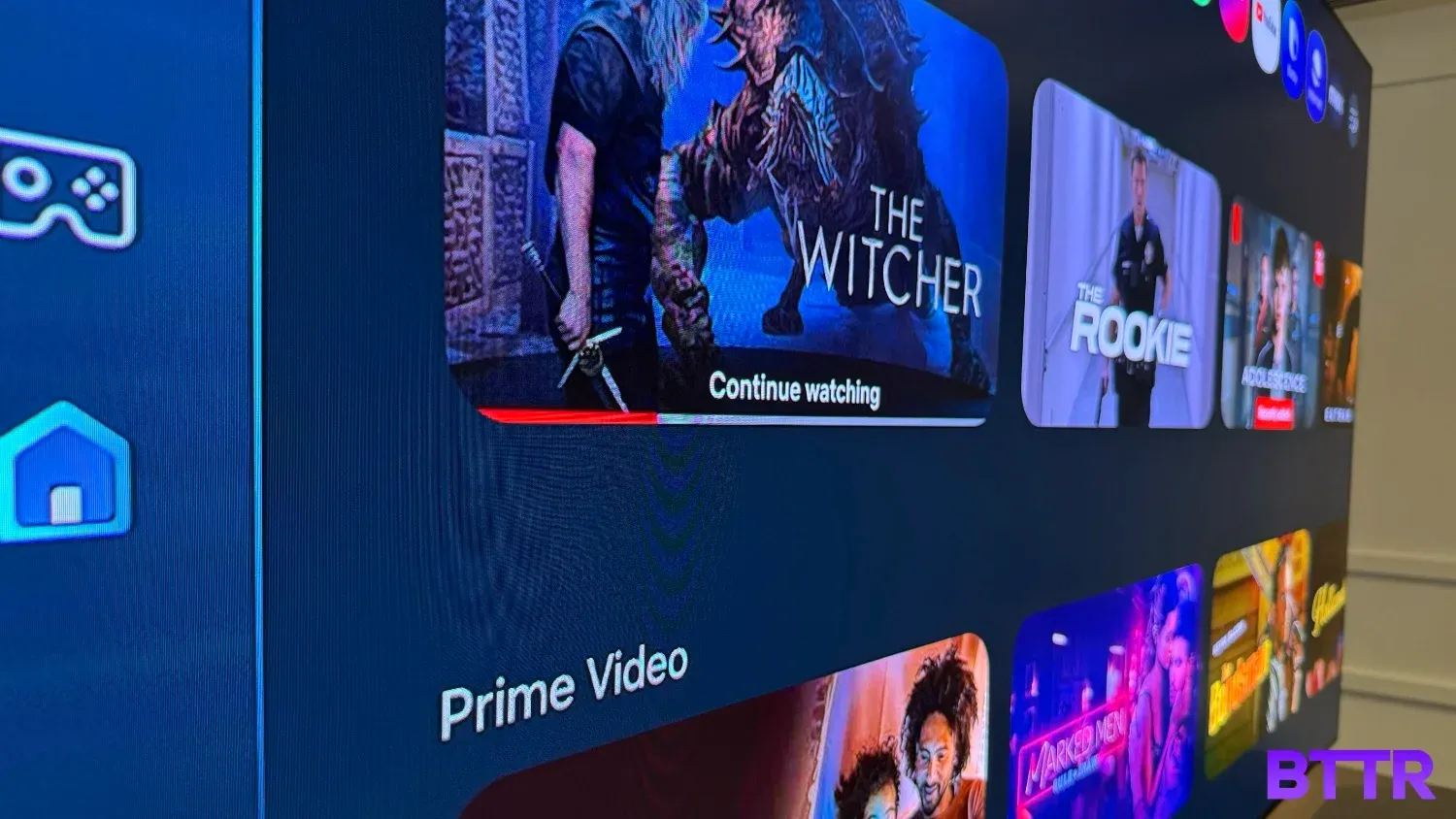
Long-time readers know I'm typically not the biggest fan of "AI". But I feel that the integration in Samsung's TVs for improving picture quality is actually an example of how the technology can be used for good and not evil.
This year Samsung has added a level of personalisation to its AI upscaling. If you dive into the settings, it will walk you through a four step process where you can define your preference for different content types: Sports, Movies and TV. You choose between four pictures as to what style you prefer, from brightness to contrast to saturation and colour tone.
Then the TV does the rest. It will automatically detect the type of content on your screen and adjust the picture to match your preferences.
You can't have different preferences for different user profiles – it's tied to the TV itself. But I do like the simplicity of this process. While you can leave AI upscaling to just automatically do everything without customisation, you can also dive into the settings manually to tweak your picture quality the old-fashioned way.
In terms of picture performance, AI upscaling isn't some magical feature though. If the source quality is low, the upscaled quality won't be much better – I tried watching Seinfeld on Netflix, and with the upscaling on it looked like static pieces of furniture were moving there was so much going on.
But if the source quality is good, then the S95F outputs a gorgeous picture, whether it's streaming 4K or gaming on an Xbox Series X.
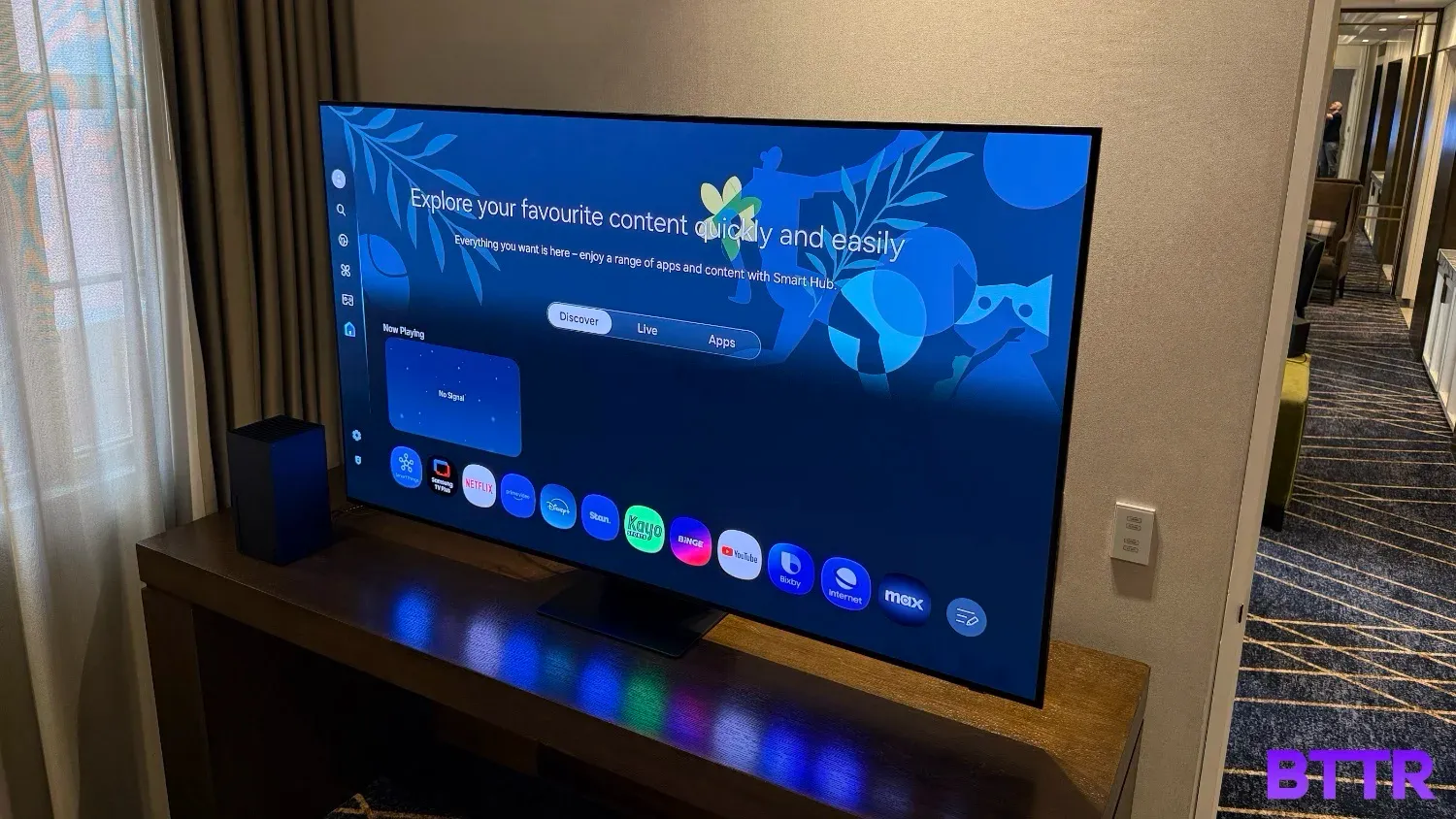
Seven years of Tizen updates
Samsung is offering seven years of firmware updates to its Tizen OS for the S95F TVs. I'm torn on this - Tizen is a solid UI, which is easy to navigate and customise to your own preferences.
But it's not something I feel needs annual updates. Do you really get that many new features with a TV operating system? I don't think so.
In any case, the S95F is simple to control. Beyond access to all the streaming services you could need, Samsung has also bundled in gaming, smart home and entertainment apps.
There's Xbox Cloud Gaming and GeForce Now support, which is cool but also not new. There's also SmartThings and smart home support.
There's also a range of smaller games and apps you can download to the TV. There's a fairly comprehensive karaoke experience, and I got excited with the ability to download and play Tetris on the TV.
That is, until a few minutes in the TV paused the game and served me a full screen ad, in which case I exited to the main menu quickly and never looked back.
Of course, you don't have to download and play any of these. But it's good to remember that if it's free, you're probably the product.
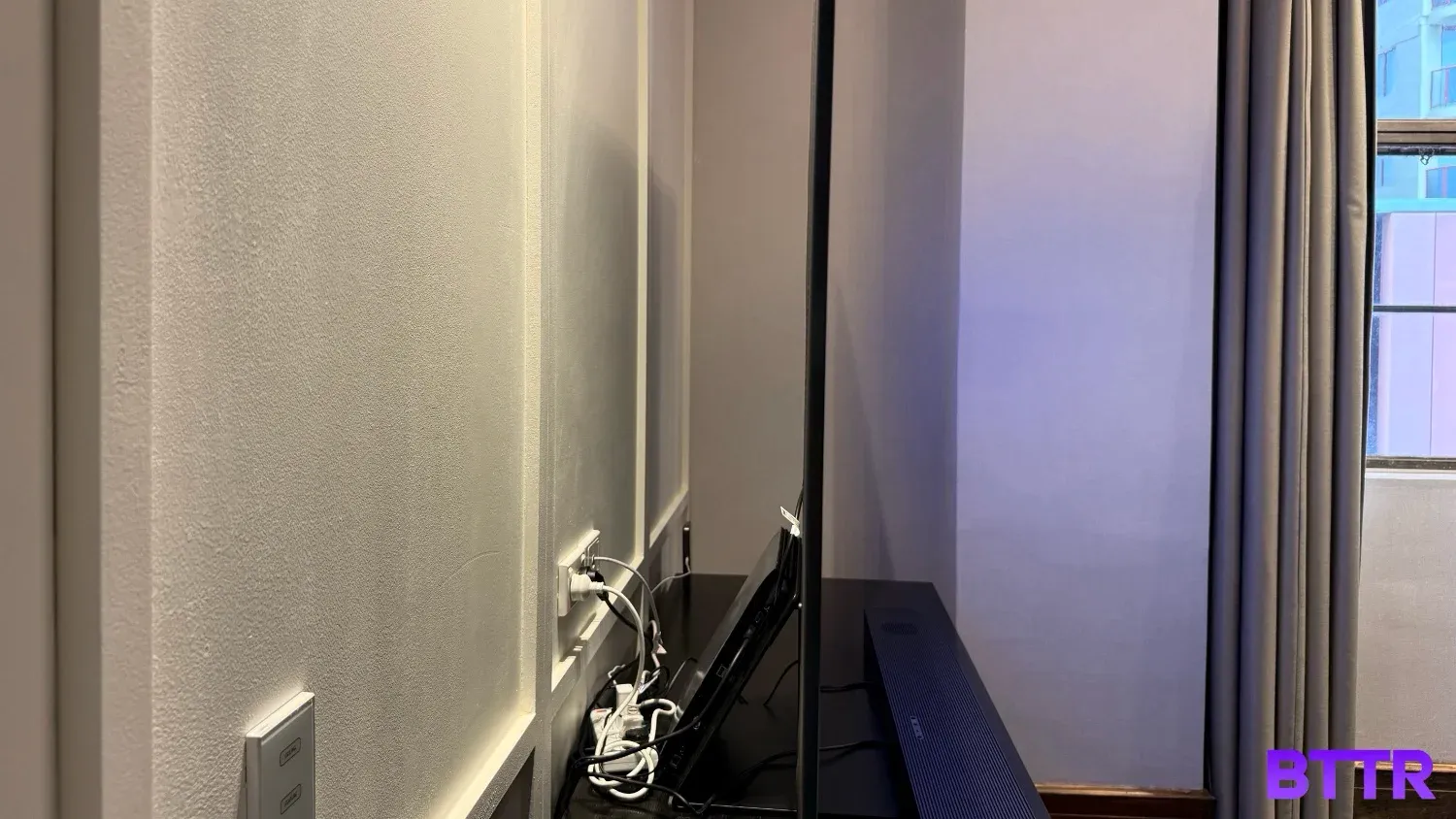
Super thin and sleek design
OLED TV's are gorgeous for their slim profile, and the S95F is impressively thin. The 83-inch TV is just 12.6mm thick – which is thinner than my finger.
The TV was mounted on a stand in the hotel room setup, but you could wall mount it, and it would look stunning.
Samsung has achieved this by putting all the TV's connections in its One Connect box, which kind of looks like a PS3 to me.
It connects to the panel with a single cord, and can be placed in a convenient location for easily connecting to your different sources. I'm a big fan of this approach.
The catch with having such a thin panel is that the audio quality suffers. Don't get me wrong, I think the sound is as good as you'll get from a TV that's 12.6mm thin. But if you're getting one of these TVs, make sure you have a soundbar. There's absolutely no reason to update your TV to offer fantastic video if your sound is limited by the TV's speakers.
Samsung did have the 83-inch connected to its new QN990F soundbar, and one of the benefits of sticking with Samsung's own branded soundbars is the Q-Symphony function, which lets the TV speakers work in tandem with the soundbar for a fuller sound.
Honestly, it was louder when this was on, but the soundbar itself gave a good enough audio quality you don't need to use this feature.
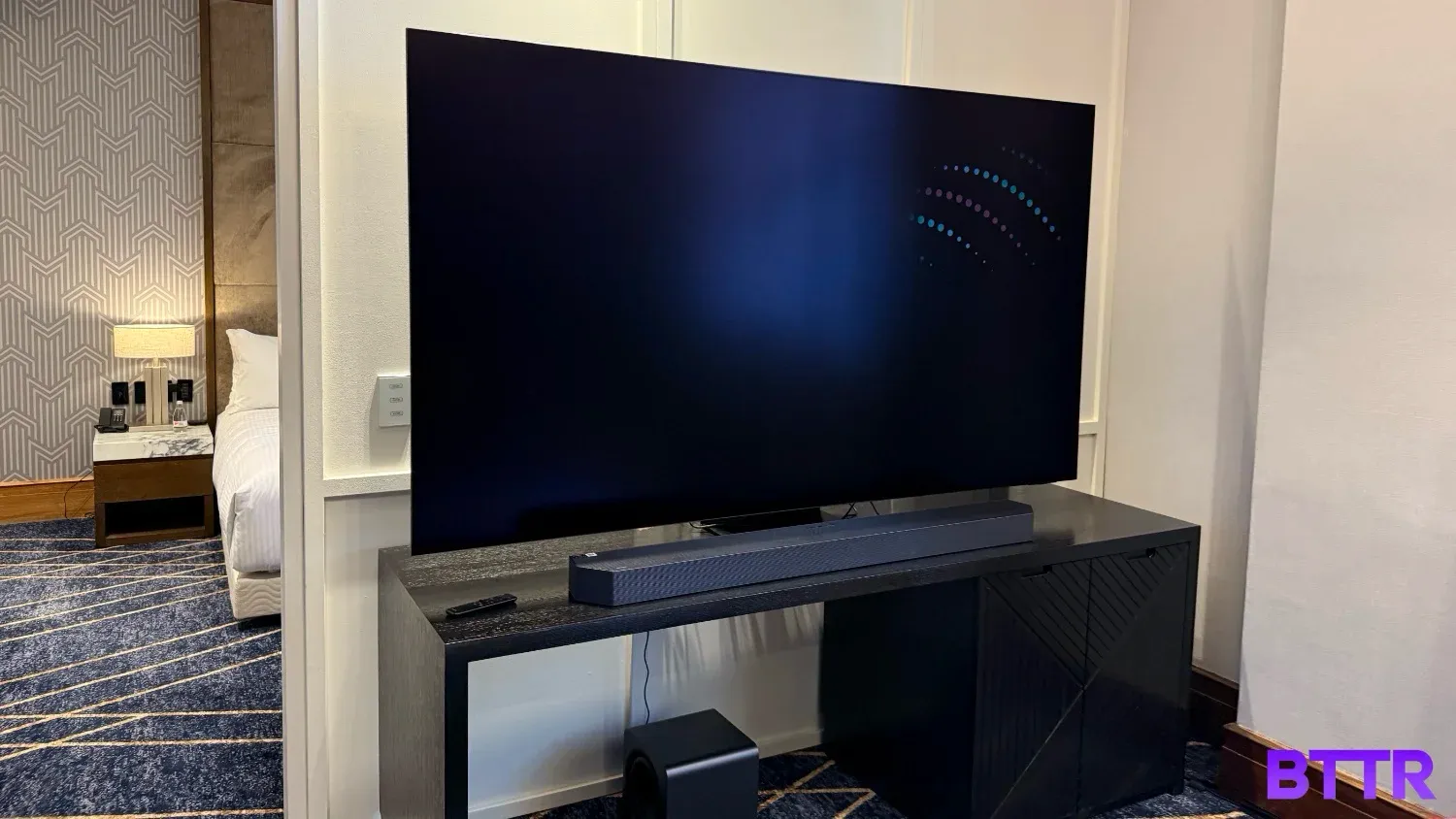
Verdict
I typically don't factor price into a review because money can mean different things to different people.
But I feel the asking price here makes it a critical part of the equation. For $11,499 for the 83-inch model, you are paying a premium for the S95F's anti-reflective coating and AI upscaling.
I haven't tested the S90F (RRP $9,199) or the S85F (RRP $8,049) models, which both come in 83-inch sizes as well, but lack the anti-reflective coating and some of the more advanced AI functions, to confidently say that the price premium is worth it.
What I can say is that if you have an awkwardly lit room that produces significant glare on your existing TV, then the S95F offers a solid way to solve that problem.
It's up to you as to whether you feel that solving that problem is worth the asking price.
🛒 Where to buy Samsung TVs and appliances
Available from these trusted retailers:










BTTR is independent, but we may earn money when you purchase through links on our site. This helps us cover costs and continue providing honest reviews. Find out why you should trust us.
Consider showing your support with a donation.

